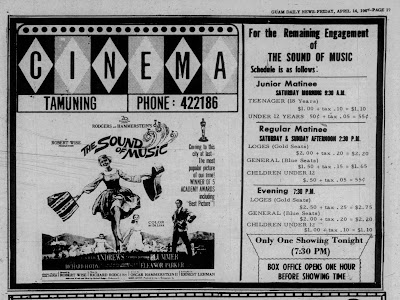WILLIAM MANN
He knew Guam well
The Marianas were not his only "playground," but he lived, worked and romped around the Marianas for a good portion of his sea-faring life.
William Mann was born in 1816 in Kirby-le-Soken, Essex, England. He was one of eleven children and did not get along with his father. He left his parental home to make a life for himself at age fourteen. He took to the sea, and traveled to the Americas.
In 1834, at age 18, he joined a whaling ship, the Falcon, and that was his first arrival to the Marianas, where for two years the ship went in search of whales in our part of the Pacific.
FROM GUAM TO POHNPEI
While sailing around the northwestern Pacific, the Falcon got short on wood and water and happened to meet up with another ship whose captain recommended the Falcon follow them to Pohnpei, then called Ascension Island, where the paramount chief of the island was friendly to this captain.
In two days at Pohnpei, the Falcon got all they needed but, in departing the island, the ship was forced into a rock by the wind, tearing a hole in her. The crew managed to get hundreds of sperm whale oil onshore and the chief agreed to take care of them till they were able to leave again. But the Pohnpeians got so interested in the iron hoops that wrapped around the oil barrels that the barrels broke open, spilling and wasting the oil, when the islanders took off the hoops to use for their own desires.
The captain of the Falcon argued with the chief and made the fatal mistake of slapping him. Not long after, the Pohnpeians attacked the crew of the Falcon, killing many. Mann was among those who survived the attack. An English ship came to Pohnpei later seeking to avenge the massacre of the crew, but Mann had no idea the ship was coming and was in another island when it arrived and left, leaving Mann in the islands. For two more years Mann lived in Pohnpei just like a native, with minimal clothing, but always fearing the islanders.
He had good reason to fear them, because he was attacked one day by two of them. He survived, but lost some fingers when he raised his hand to protect his head from a cut, and his mouth was also severely damaged. Two of his fellow crew members bandaged him best they could and protected themselves with their guns. Finally, an American whaling ship came around and took them to Guam.
RECUPERATING AT GUAM
PAUL WILLIAM GEORGE
Guam's Doctor in the mid 1800s
Paul William George was an Anglo-Irishman who left the seaman's life to settle on Guam for good. He had some medical knowledge and was something of the island doctor on Guam in the mid 1800s. This was the founder of the George family here on Guam. George treated William Mann's injuries "very skillfully," said a news report. But in the photo of Mann above, you can see that the injury to his mouth was never fully corrected.
Mann continued to live in the Marianas for between thirty and forty years! But he used Guam as a base from which he traveled all over the Pacific, buying and selling. He eventually got tattooed all over his body.
BURIED TREASURE ON PAGAN?
PAGAN
Stories had been going around for many years that treasure had been buried on one of the northern islands in the Marianas. No one knew for sure which island, but Pagan was always a favorite. For two years Mann and some allies dug around Pagan, to no avail.
HE AND HIS CHAMORRO CREW COMMANDEERED
Mann eventually became captain of his own small schooner, which had been stolen from the British, and he got into the business of carrying cargo up and down the Marianas and other islands in the area.
One day, while anchored at an island, nine Spanish prisoners who had escaped from Guam boarded his schooner and took over. Mann had a small crew of three or four Chamorro so they were outnumbered. The escaped prisoners forced him to sail to Yap and there he met the American Crayton Philo Holcomb, "married" to the Chamorro Bartola Garrido. A German ship came by and directed Mann to Hong Kong where, unfortunately, the British discovered that Mann's schooner had been stolen.
DOWN AND OUT IN HONG KONG
OLD HONG KONG
Deprived of the schooner, Mann barely eked a living for eleven years in Hong Kong. An English chaplain to seamen in Hong Kong took an interest in Mann's plight and managed to send Mann back to his native town in England, which he had abandoned more than fifty years earlier. There back in England he died penniless, surviving on the charity of kind people.
One has to admire the man. He frequently lived on the edge of destruction, but lived into his 80s. He lived in some of the most remote places on earth for the longest time, and died right back where he started at the place he was born.
A bachelor living among us in the Marianas all those years....who's to say he never fathered Chamorro children without marrying, whose descendants are still with us today?
















.jpg)
